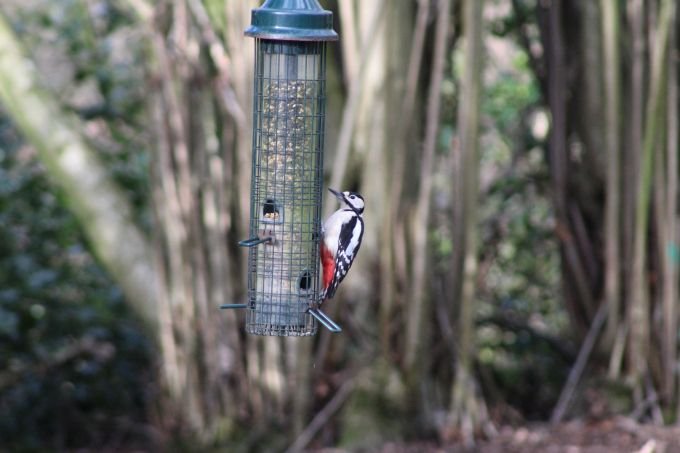Welcome to the second in my wildlife focus blog series (did you catch the first on the mole?) and in this one I'm sharing some facts about the great spotted woodpecker. You can tell them apart from their lesser cousins by their distinctive black and white wings, white shoulder part, and scarlet flashes on the adult males and juveniles. The crucial difference is the red underpart on the great, which the lesser does not have here's a video by the BTO that goes into more depth.

Essential facts
Woodpeckers drum on trees and other objects in a show of territory and to attract a mate. Unpaired GS woodpeckers can drum 600 times a day, while a paired male may drum around 200. They can even smack their heads into trees at 15 miles per hour with apparently no ill effects.
And about that drumming - the woodpecker has a cushion, shock-absorbent tissue between the bill and skull to lessen the impact, though it's thought that this drumming actually gives woodpeckers brain damage!
The great (not greater) spotted woodpecker is a species of fairness and equality - both sexes share the duty of excavating the nest holes and incubating the eggs on the nest. This is quite unusual in birds, as usually the males go out for food and return to the nest to feed the nesting mother and their chicks. For the great spotted woodpecker, however, both the male and female will incubate the eggs for around 12-20 days until they hatch, at which point the chicks fledge the nest, though they continue to be looked after for 10 days as they grow increasingly independent.
Woodpeckers have started visiting garden feeders in the last 20 years - if you want to attract them, put out suet and peanuts.
They primarily eat insects but will feast on small bird chicks in spring.
Juveniles have a red hat and adult males can be identified by the patch of red on the back of their necks.
Like other woodpeckers, they are zygodactylic - they have two toes facing forward and two toes facing backward, which enables them to climb trees.
Hi! I am a robot. I just upvoted you! I found similar content that readers might be interested in:
https://thisveggielife.blog/2018/03/25/wildlife-focus-great-spotted-woodpecker/